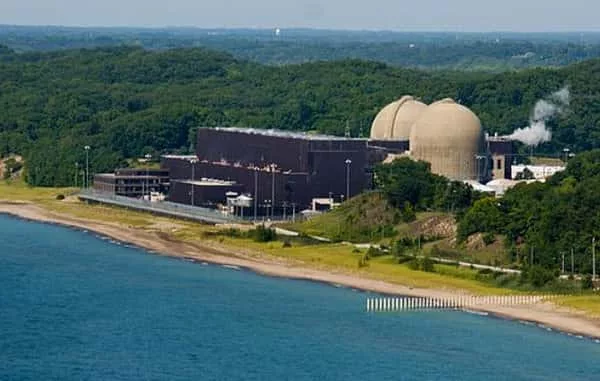A veritable army of utility workers will descend on the entire region for the foreseeable future thanks to both routine and special maintenance scheduled for Bridgman's Cook Plant beginning this week. Many hotels, motels, camp grounds, restaurants, diners and entertainment facilities can expect a boost in business as a result of the influx of some 1,500 additional workers at the plant.
Tomorrow night at midnight, the Cook Nuclear Power Plant's Unit 1 will launch its 26th refueling outage, as American Electric Power Company reinvests in the community of Michigan's Great Southwest. Cook's Unit 2 will remain at 100-percent power throughout the planned outage.
Power was reduced at Unit 1 last night (Sunday, March 20, 2016) to 50-percent to accommodate equipment testing prior to the outage which begins at midnight Tuesday. During the 18-month fuel cycle coming to an end, that single unit is projected to have generated 11.6-million megawatt hours of electricity at a capacity factor of 91-percent according to Indiana Michigan Power Company officials.
Joe Gebbie is Chief Nuclear Officer and Senior Vice President for AEP. He says, “AEP continues to invest in the Cook Nuclear Plant and southwest Michigan.” He adds, “The major component replacements are just part of our reliability improvements and increased safety margins that will benefit the plant for decades to come.”
In addition to refueling the reactor and performing regular maintenance and testing work, the current outage also includes several Life Cycle Management (LCM) projects. In 2005, Cook received license renewals from the Nuclear Regulatory Commission that will allow the units to run to 2034 and 2037 respectively. That is an additional 20 years beyond their original licenses.
One of the LCM projects this outage is replacement of two 60-ton feed-water heaters that pre-heat water before it enters the steam generators. A 40-ton safety-related heat exchanger will also be replaced. Other modifications will enhance the reliability of plant emergency electrical systems and decrease the wear on steam generator tubes.
About 1,500 contracted workers will supplement the regular 1,200-person plant staff leading up to and during the outage. More than 13,500 maintenance, inspection and equipment modification job activities totaling almost 300,000 work-hours are scheduled for two daily 12-hour work shifts. The expected outage duration is not released for commercial reasons.
At full capacity, the 1,030-net MW Unit 1 and 1,077-net MW Unit 2 combined produce enough electricity for more than one and one half million average homes.






